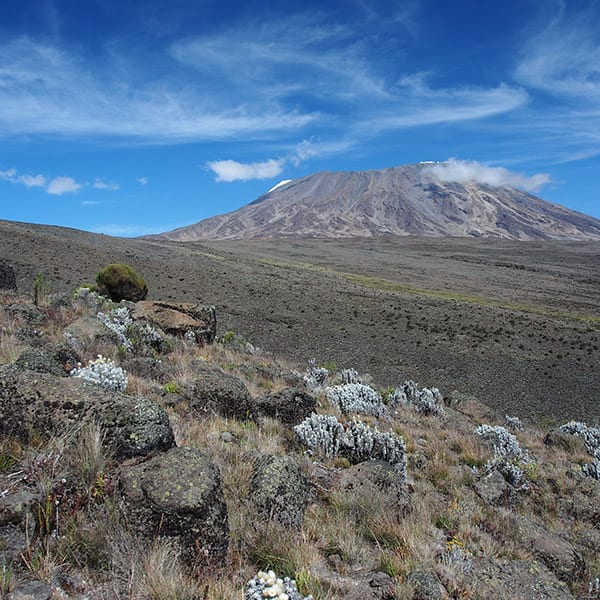Trip duration:
9 days
Challenge duration:
7 days
Challenge grade:
5/5
Departure months:
February, June, September - November
Accommodation:
Twin-share in 3-star hotels and comfortable camping
Hiking Mt Kilimanjaro
Rising impressively from the rainforests of the East African plains, the snow-capped peak of Kilimanjaro is an awe-inspiring sight. To stand at its summit is to quite literally stand on top of the world.
On this 9-day adventure, you will be pushed both physically and mentally as you trek through five different climatic zones under the care of experienced local guides.
Trekking from farmlands to verdant rainforest, through alpine meadow and across the barren lunar-like landscape to the summit, this adventure is sure to change your life.

Why you'll love this adventure
- Feel the elation of standing on top of the world’s highest freestanding mountain, the mighty Kilimanjaro (5,895m) and gazing out over the stunning East African plains.
- Climb through rainforests, ice fields and alpine meadows and camp in the shadow of glaciers.
- Build lifelong friendships and camaraderie with like-minded teammates, all united by your passion for your chosen cause and the desire to travel for good.

We partner with a local travel operator for this adventure who is Travelife Certified. You can find out more here.
Trip notes
Frequently asked questions
Can't find the answer to your question? Get in touch via email (info@inspiredadventure.com.au
All information is subject to change and will be confirmed upon your registration.
Responsible Travel
Caring for our adventurers, the communities we visit and the wellbeing of the planet is the heart of everything we do. This adventure is no exception.
Meaningful connections: Hear from Aranda Elders who will tell us about the history of the area.
Environment: We offset the emissions from this trip through carbon credit programs in partnership with Carbon Neutral.
Treading lightly: Trekking is a great, low-impact way to explore.
Small group travel: Our teams consist of a maximum of 25 people. Better for you, and better for the planet.
Responsible business: We’re a certified B-Corp, committed to using business as a force for good
Upcoming adventures
ShelterBox Australia – Mt Kilimanjaro Trek
Motor Neurone Disease (MND) NZ – Kilimanjaro trek
Motor Neurone Disease (MND) VIC – Kilimanjaro trek
Pancare – Kilimanjaro Trek
Thin Green Line – Kilimanjaro Trek
R U OK? Kilimanjaro Trek
Chameleon Buddies – Kilimanjaro trek
Do you want to take your supporters on an adventure-of-a-lifetime?
Enquire today about an itinerary for your organisation.
We’re a certified B Corp, committed to using business as a force for good.











